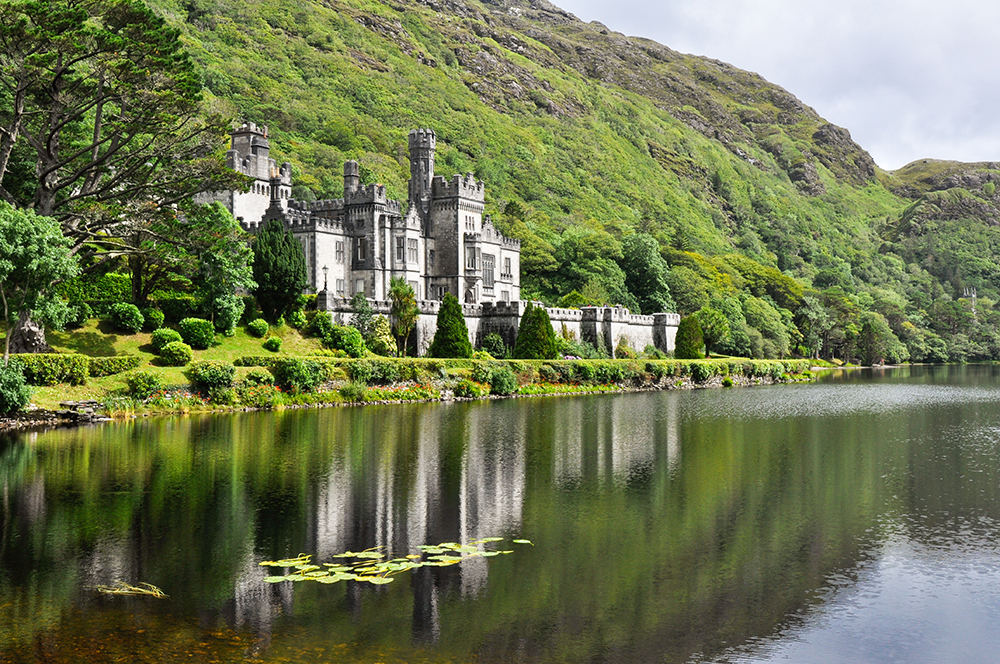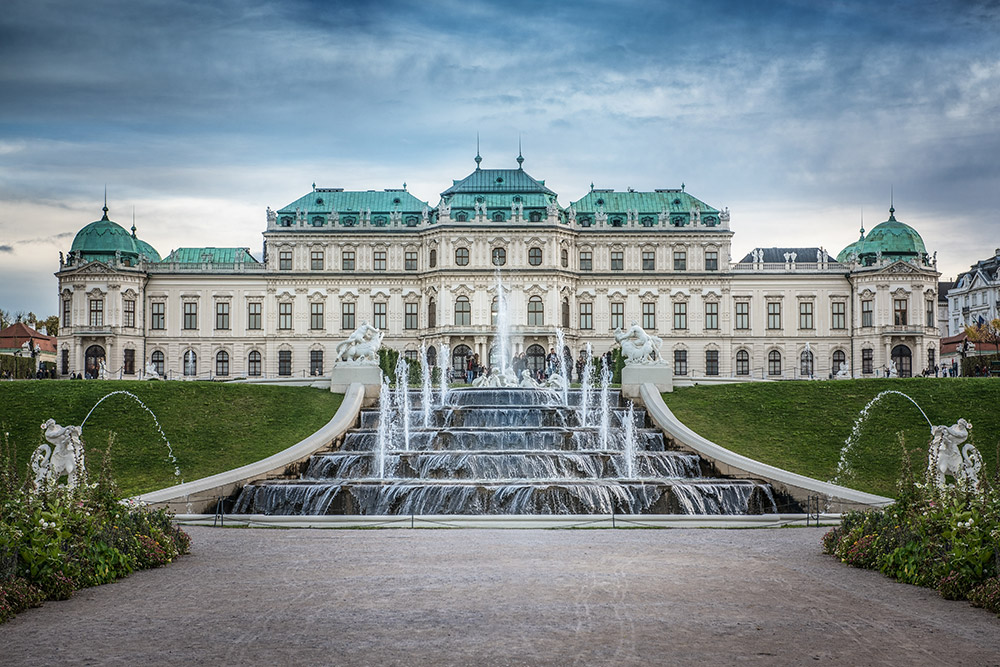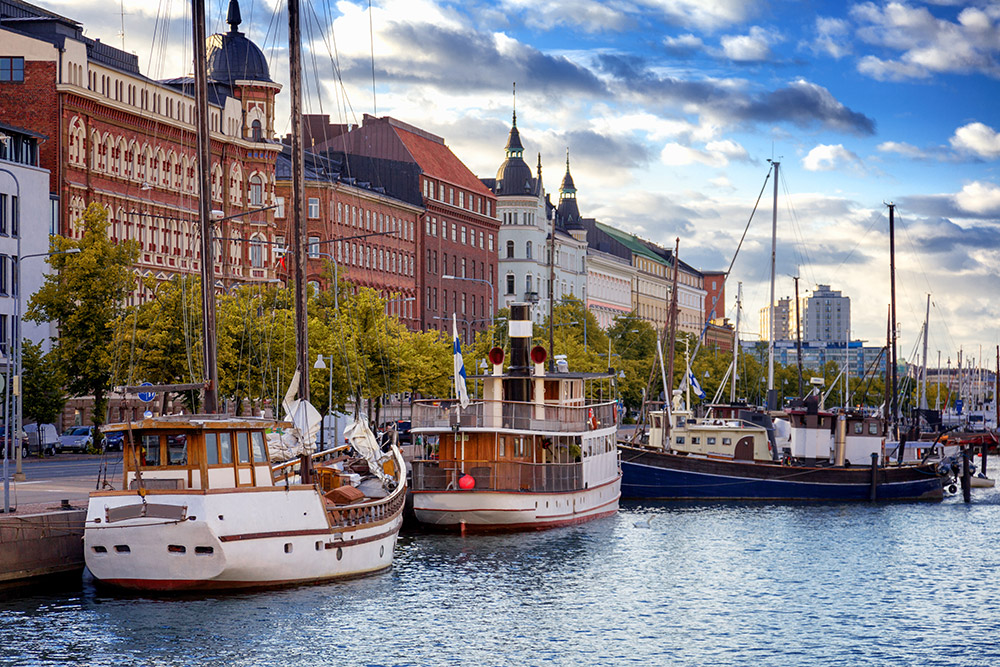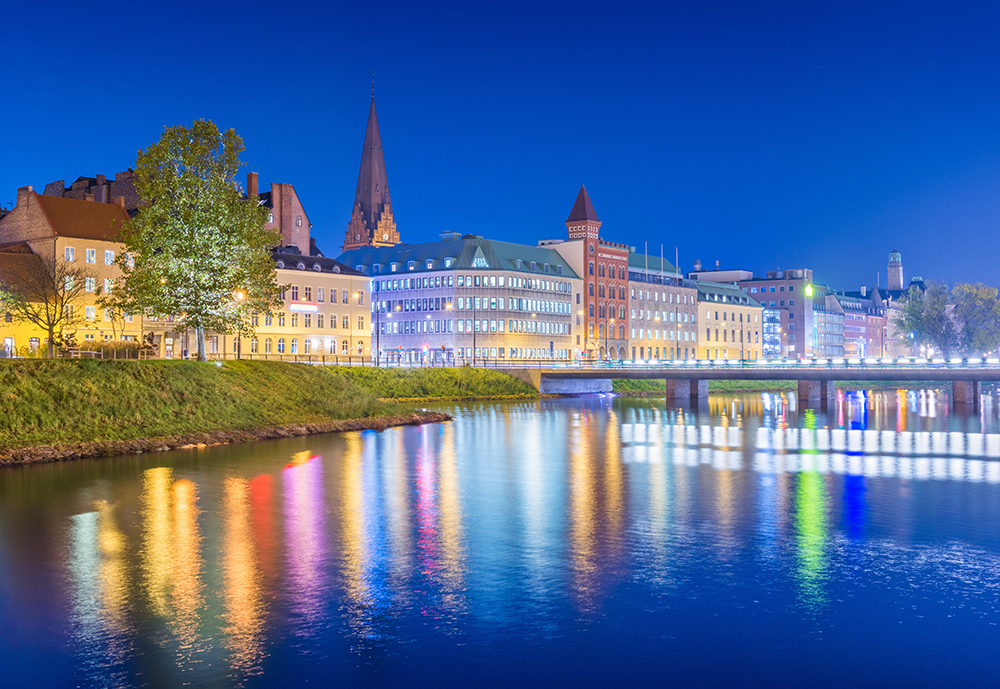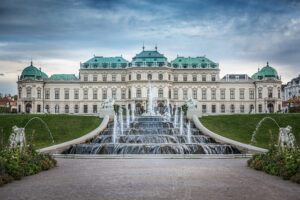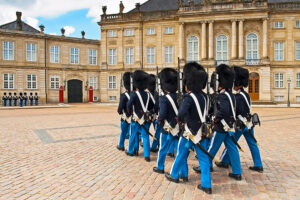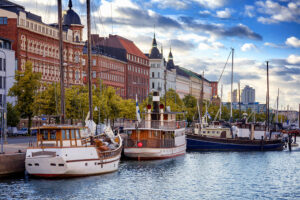Ireland is a divided island comprising two countries: the Republic of Ireland, consisting of 26 counties, and Northern Ireland, consisting of 6 counties, and forming part of the United Kingdom of Great Britain. Currently, there is no border between the two countries, allowing tourists to travel freely throughout the entire island.
Popular itinerary to Ireland with a Focus on History and Culture:
Ireland boasts a rich history, spanning from ancient times with its original inhabitants, through the Celtic heritage and culture of the Irish people, to Viking invasions and 800 years of British rule.
The following suggested itinerary begins and ends at Dublin International Airport.
Day 1: Dublin
Dublin, Ireland’s capital and largest city, traces its roots back to a Viking settlement along the banks of the River Liffey. Serving as the focal point of British administration for over 800 years, Dublin played a central role in Ireland’s quest for independence.
Dublin’s city center is compact and easily navigable on foot. Begin your exploration around Christ Church Cathedral, the older of the two cathedrals in the city and the heart of the original Viking settlement. As you stroll through the area, observe Viking remains embedded in the pavements. On the cathedral’s west side, you’ll cross the outline of an ancient Viking house set into the sidewalks. For a deeper exploration into Dublin’s Viking history, visit the Dublinia center just across the street.
Proceed to Dublin Castle, where you can explore the grounds free of charge. Envision the British officials who ruled over Ireland from these buildings for over eight centuries; today, some of these structures still function as government offices.
Continue your stroll to St. Patrick’s Cathedral, erected on the site where St. Patrick utilized a well for Christian conversions. The original structure dates back about 800 years, having undergone modifications and renovations throughout the centuries. It carries profound religious significance in Dublin and is closely linked to its illustrious dean, Jonathan Swift, renowned as the author of “Gulliver’s Travels.” You can find Swift’s final resting place within the cathedral.
While in the area, consider a visit to the famous Guinness Storehouse, which tells the story of the Guinness family and Ireland’s beloved stout, Guinness. On the seventh floor, enjoy a complimentary pint of Guinness along with panoramic views of Dublin. Alternatively, take a break at the Brazen Head, Dublin’s oldest pub.
Spend the night in Dublin.
Day 2: Dublin, continued
Start your day with a visit to Ireland’s oldest and most cherished treasure – the Book of Kells. This decorated manuscript of the four testaments was written 1200 years ago in Iona Abbey and is currently safeguarded in Trinity College’s Old Library. The visit will guide you through a digital showcase of the manuscript’s distinctive decorations and lead you along the long hall of the old library.

Take a leisurely stroll through the college grounds to delve deeper into Ireland’s first university. Continue your exploration by heading to the National Museum of Ireland – Archaeology, where you’ll find exhibitions featuring ancient Irish crafts, monastic remnants, Viking artifacts, and the enigmatic bog bodies.
Stop for a break in Merrion Square, where you can admire the Oscar Wilde statue overlooking his birth home and the playground inspired by “The Selfish Giant.” While around St Stephen’s Green, be sure to admire the unique Georgian house doors. Treat yourself to a coffee break at Stephen’s Green Shopping Centre and enjoy some shopping on Grafton Street.
As evening falls, enjoy Irish music and drinks at one of the pubs in Temple Bar.
Spend the night in Dublin.
Day 3: Dublin, continued
Explore the northern part of the city today. Begin at Glasnevin Cemetery, Ireland’s National Cemetery, where a cemetery guide will lead you through the graves of those who played a pivotal role in Ireland’s struggle for independence during the 1916 Rising, the War of Independence, and the Civil War.
For further insights into recent Irish history, visit Kilmainham Gaol, which served as a prison for over 100 years, housing individuals incarcerated for minor crimes as well as leaders of the 1916 Rising.
If weather conditions allow, spend the afternoon in Howth, a northern suburb and a historic fishing village. Howth Pier boasts several fish and seafood restaurants that procure fresh products from the sea. Explore the food market and enjoy a pleasant cliff walking trail.
Spend the night in Dublin.
Day 4: Newgrange
Enjoy a day tour to one of Ireland’s most ancient and mysterious sites – Newgrange. Newgrange is part of a select group of passage tombs built in the Boyne River Valley nearly 5000 years ago. The entire area holds the distinction of being a designated UNESCO World Heritage Site, and Newgrange, as the largest tomb, aligns with the winter solstice.
Spend the night in Dublin.
Day 5: Belfast
Start your journey north, headed to Belfast, the capital and largest city of Northern Ireland. Once an industrial and shipbuilding hub, Belfast played a significant role in The Troubles – the conflicts in Northern Ireland during the 20th century.
Belfast is forever etched in history as the birthplace of the Titanic – the huge cruise ship that met its fate on its maiden voyage to New York. Begin your exploration at the Titanic Quarter, where the innovative Titanic Experience stands on the grounds of the Harland & Wolff shipyard.
As you venture into the city center, drive along the Peace Walls, erected to separate the divided communities along the Falls and Shankill roads. Today, these walls showcase street art reflecting diverse political affiliations.

In the evening, immerse yourself in the vibrant atmosphere of the Cathedral Quarter, where numerous pubs offer music and drinks for a delightful experience.
Spend the night in Belfast.
Day 6: En Route to Derry
Discover remarkable attractions today, such as Giant’s Causeway, where the shores of the Atlantic Ocean boast dramatic basalt cliffs and stones. In close proximity to the causeway, be sure not to miss the captivating ruins of Dunluce Castle, a 16th-century castle perched on the picturesque Antrim Coast.
Continue your journey to Derry (Londonderry), Northern Ireland’s second-largest city. Stroll along the city walls, explore the Free Derry Corner, and visit the Bogside neighborhood, a site of significant clashes during The Troubles. Discover the Guildhall, the city’s town hall adorned with ornate windows and housing a local history exhibition.
Spend the night in Derry.
Day 7: En Route to Galway
Head south, back to the Republic of Ireland, where distances change from miles to kilometers. Drive through the charming towns of Donegal and Sligo to reach Galway. Both Donegal and Sligo, situated not far from the Atlantic Ocean coast, offer magnificent viewing points and scenic walking trails along the beach. Don’t miss the opportunity to explore the Donegal Craft Village just outside Donegal town and visit the Yeats Society Sligo in Sligo, commemorating the life and work of W.B. Yeats, Ireland’s greatest poet.
Galway, the largest city in western Ireland, is a lively and cheerful destination filled with music and positive vibes. Explore Galway Cathedral, a relatively new structure built in the mid-20th century that showcases diverse architectural influences from Gothic to Renaissance. Take a stroll through the Latin Quarter and the Spanish Arch, remnants of the walls that once protected the city and port. Explore the medieval alleys, street performances by young talents, and the plethora of pubs and restaurants.
Spend the night in Galway.
Day 8: Connemara National Park
Take a scenic drive through the mesmerizing landscapes of the Connemara National Park and explore the charming Kylemore Abbey. Nestled in the heart of Connemara, the abbey is an impressive estate on the shores of a serene lake, surrounded by majestic mountains and natural beauty, which was originally constructed as a family residence. Discover the history of the family that built this grand house and hear the story of how nuns eventually found their way to this remote corner of Ireland within the estate. Don’t miss the unique Gothic-style chapel and the Victorian garden. Take a moment to stop in one of the charming villages, embark on a short hike starting from the Connemara Visitor Center, and relish the untamed scenery.

Spend the night in Galway.
Day 9: Burren National Park and Cliffs of Moher
Take a scenic drive through the enchanting Burren National Park and take a few breaks to absorb the unique views of this lunar-like landscape. Continue your journey towards the Cliffs of Moher, Ireland’s most visited natural wonder. Along the way, consider stopping at one of the sheep farms that offer demonstrations on working with herding dogs. Continue through Lisdoonvarna, a charming village renowned for its annual match-making festival in September, and Doolin, considered the heart of Irish music. Drop into one of the lively pubs for a pint, lunch, and an uplifting music session.
If you’re up for it and weather conditions permit, take the approximately 4.5- mile Cliff Walk from Doolin to the Cliffs of Moher. Alternatively, drive to the Cliffs of Moher Visitor Center.
Spend the night in Limerick.
Day 10: Limerick
Limerick, situated along the River Shannon, Ireland’s longest river, features, King John’s Castle, its main attraction. Constructed over 800 years ago by the formidable King John of England, the castle served to reinforce his influence in Ireland. Across from the castle, the Treaty Stone is a symbol of the city of Limerick’s surrender to King William II of England.
Next, drive to Cashel to explore the Rock of Cashel, the stronghold of the legendary High King of Ireland, Brian Boru. Conclude the day in Kilkenny, where you can unwind in one of the many pubs with music, drinks, and delightful cuisine.
Spend the night in Kilkenny.
Day 11: Kilkenny
Discover Kilkenny Castle, nestled at the heart of the town. The castle, built in the 12th century by William Marshal, the 4th Earl of Pembroke, signifies the onset of Anglo-Norman influence in Ireland. Take a guided tour through its rooms, adorned with authentic artifacts, unveiling the castle’s rich history as the ancestral residence of the Butlers, Earls of Ormond, until the Irish state assumed ownership in 1970. Enjoy a leisurely stroll through the beautiful castle gardens for a relaxing break.

Kilkenny is renowned for its Medieval Mile, an historic thoroughfare weaving through the town center, connecting Kilkenny Castle with the distinguished St. Canice’s Cathedral.
Drive north to Glendalough. True to its Gaelic name, Glendalough, the valley of two lakes, offers picturesque walking trails and the revered Glendalough Monastery founded by St. Kevin in the 6th century.
Spend the night in Dublin.


